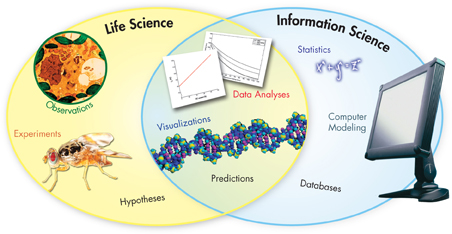Comparing Sequences If you were to compare the genomes of two unrelated individuals, you would find that most—but not all—of their DNA matches base-for-base with each other. On average, one base in 1200 will not match between two individuals. Biologists call these single base differences SNPs (pronounced “snips”), which stands for single nucleotide polymorphisms. Researchers have discovered that certain sets of closely linked SNPs occur together time and time again. These collections of linked SNPs are called haplotypes—short for haploid genotypes. To locate and identify as many haplotypes in the human population as possible, the International HapMap Project began in 2002. The aim of the project is to give scientists a rapid way to identify haplotypes associated with various diseases and conditions and to pave the way to more effective life-saving medical care in the future.
MYSTERY CLUE

Scientists can detect the sickle cell allele with a test for SNPs in the genes for the polypeptides that make up hemoglobin. What does this tell you about the sickle cell mutation?
Sharing Data The Human Genome Project was completed in 2003. Copies of the human genome DNA sequence, and those of many other organisms, are now freely available on the Internet. Online computer access enables researchers and students to browse through databases of human DNA and study its sequence. More data from the human genome, and the genomes of other organisms, are added to these databases every day.
One of the key research areas of the Human Genome Project was a new field of study called bioinformatics. The root word, informatics, refers to the creation, development, and operation of databases and other computing tools to collect, organize, and interpret data. The prefix bio- refers to life sciences—specifically, molecular biology. Assembling the bits and pieces of the human genome would have been impossible without sophisticated computer programs that could recognize overlapping sequences and place them in the proper order, or immense databases where such information could be stored and retrieved. Without the tools of bioinformatics shown in Figure 14–13, the wealth of information gleaned from the Human Genome Project would hardly be useful. Bioinformatics also launched a more specialized field of study known as genomics—the study of whole genomes, including genes and their functions.

FIGURE 14–13 Bioinformatics Bioinformatics is a new field that combines molecular biology with information science. It is critical to studying and understanding the human genome.
ddTable of Contents
- Formulas and Equations
- Applying Formulas and Equations
- Mean, Median, and Mode
- Estimation
- Using Measurements in Calculations
- Effects of Measurement Errors
- Accuracy
- Precision
- Comparing Accuracy and Precision
- Significant Figures
- Calculating With Significant Figures
- Scientific Notation
- Calculating With Scientific Notation
- Dimensional Analysis
- Applying Dimensional Analysis




